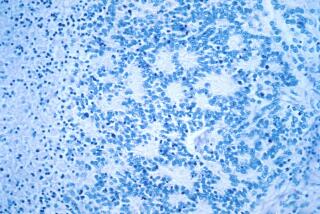First Patient Undergoes Gene Insertion in Cancer Treatment
WASHINGTON — Genetically engineered cells were injected into a human patient for the first time Monday, in a federally approved experiment designed to enhance an already novel cancer therapy.
This first round of gene transfer experiments, in which a gene was inserted into a patient’s white blood cells, is not expected to directly benefit an individual patient. Instead, the inserted gene is being used to track the movement in the body of the cancer-fighting white blood cells.
Nonetheless, the technique of “gene insertion (could) produce therapeutic results in a wide range of diseases,” National Institutes of Health Director James B. Wyngaarden said in a statement.
Monday’s experiment was designed to track special, laboratory-grown white blood cells known as tumor-infiltrating lymphocytes (TILs). The TILs in turn attack the cancer.
Using gene transfer technology developed by W. French Anderson of the National Heart Lung and Blood Institute and the National Cancer Institute’s R. Michael Blaese, the NIH team inserted into the TIL cells a bacterial gene that inactivates the drug neomycin. This will allow them to track the cells in the patients.
The bacterial gene acts as a marker for the affected cells, giving them the ability to resist a version of neomycin, called G418, that poisons human cells. The researchers can then routinely take blood samples and biopsies from the patients and either treat the white blood cells with G418 to kill all but the genetically changed TIL cells or probe the DNA of white blood cells to find the genetic marker.
Inserting human genes to repair defects may one day help with a host of inherited disorders, including cystic fibrosis or Duchenne’s muscular dystrophy. Gene insertion might also help brain disorders such as Alzheimer’s disease or other illnesses, such as growth disorders, heart disease caused by alterations in the way cholesterol is metabolized and defects of the immune system.






